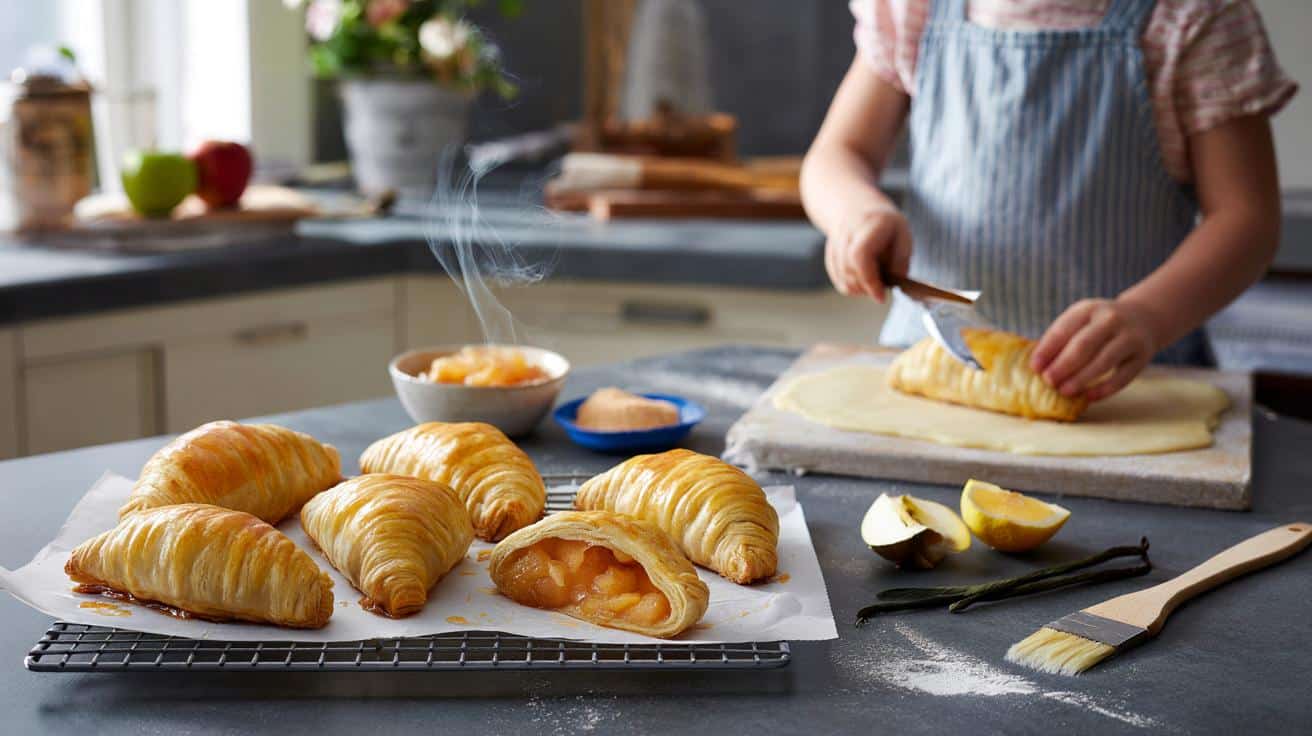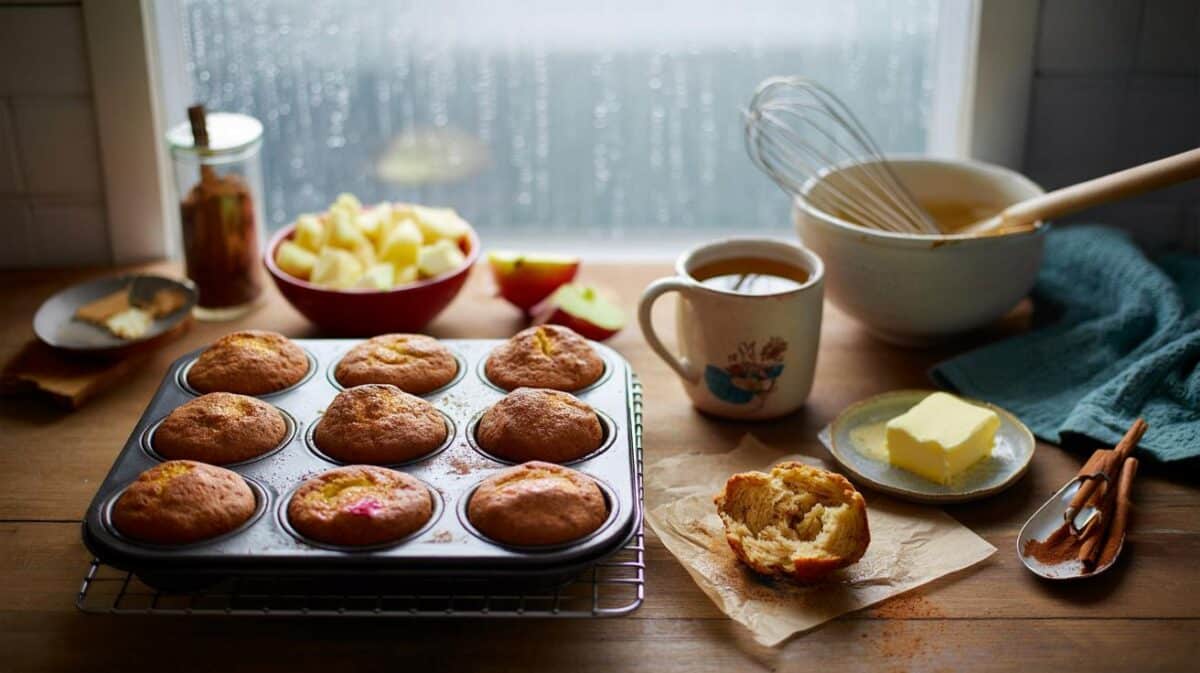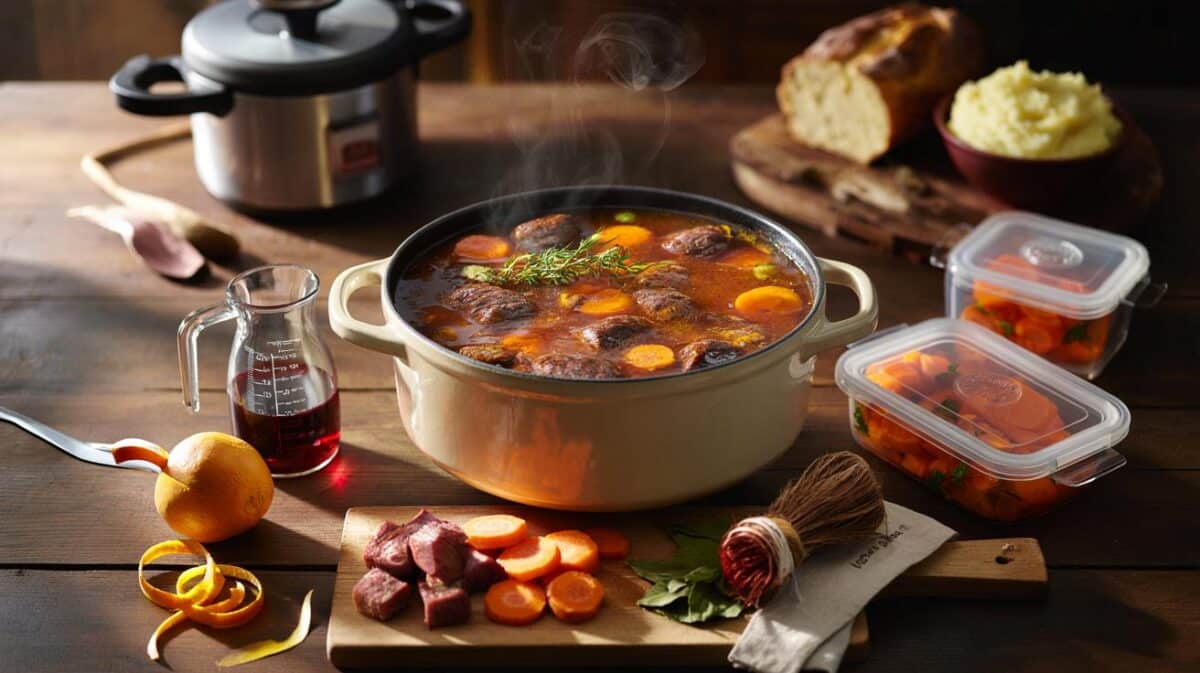Across the country, a familiar bake is stealing back attention: the apple turnover. Tight budgets, bumper apple boxes and a craving for warmth now steer home cooks toward all-butter puff and a pan of vanilla-scented fruit. The payoff feels immediate: a tray of bronzed crescents that crackle at first bite and give way to a soft, perfumed centre.
Why apple turnovers are trending this week
Households want comfort that makes sense in pounds, minutes and effort. One packet of ready-rolled puff, five tart apples and a short spell at 200°C yield six generous turnovers. No specialist kit, no long list of ingredients, and no need to brave a queue. Children can help with crimping. Adults get a café-style treat without a café bill.
Six pastries, 25 minutes, 200°C: the numbers tempting busy households as autumn sets in.
The flavour profile suits the season. Butter layers give crunch, while a slow-cooked compote holds gentle sweetness and the soft bite of fruit. That contrast carries nostalgia for many, yet it also works for brunch, lunch-boxes and late-night snacks.
What you need for six golden crescents
- 2 sheets all-butter puff pastry (about 500 g in total), well chilled
- 5 firm, tangy apples (Boskoop, Cox, or Golden work well)
- 40 g light brown or demerara sugar
- 1 vanilla pod, split and scraped, or 1 teaspoon vanilla sugar
- 20 g unsalted butter
- 1 egg yolk mixed with 1 tablespoon milk for glaze
- Juice of half a lemon
These quantities make six pieces with a diameter of roughly 12–14 centimetres. That size gives enough fruit-to-pastry balance without leakage.
From pan to tray: the method that gives crunch outside, velvet inside
Vanilla compote with soft chunks
Peel apples and cut them into thick wedges. Toss with lemon juice to keep the flesh pale. Melt butter in a wide pan over a low flame. Add apples, sugar and vanilla. Stir often while the fruit releases juice, then keep going until most moisture evaporates and the texture thickens. Stop while some pieces still hold their shape. Let the pan cool to room temperature.
Moisture is the enemy of crisp layers. Reduce the compote until it mounds on a spoon and looks glossy.
Cold pastry, quick rest, high heat
Unroll cold pastry on a lightly floured surface. Stamp out six rounds using a bowl or cutter. Place a spoonful of cooled compote in the centre of each round, leaving a clear rim of 1–1.5 centimetres. Dab the rim with water. Fold into half-moons. Press edges with the back of a fork for a tight seal. Set the turnovers on a lined tray. Whisk yolk with milk and brush lightly over the surface. Score faint curved lines with a small knife. Chill the tray for 15 minutes.
- Keep pastry cold from start to oven for maximum lift.
- Brush sparingly; too much glaze can puddle and burn.
- Rest the shaped pieces to relax gluten and set the layers.
Do not open the oven door mid-bake. Trapped heat and steam create lift; a draft will flatten the layers.
Oven timing, colour cues and a plea: do not peek
Heat the oven to 200°C with fan. Bake the chilled tray for 20–25 minutes. Watch for deeply golden tops, lacquered edges and visible separation of layers. Let the pastries sit on a wire rack until warm rather than hot. The centre sets as steam drifts off, giving a neater bite and fewer burnt tongues.
Variations that keep the household interested
Cinnamon warmth, pear sweetness, almond chew
A small pinch of ground cinnamon brings cosy spice. A handful of tiny pear cubes folded into the compote rounds out the fruit without making it watery. Finely chopped marzipan or almonds add chew and fragrance. For something richer, swirl a spoon of thick caramel into the filling, or scatter flaked almonds over the glaze before baking for extra crunch.
Prefer less sugar? Use sharper apples and hold back 10 g of sugar in the pan. Fancy a brighter note? Grate in lemon zest just before folding the turnovers to preserve the oils.
How homemade stacks up against the shop counter
| Factor | Bakery turnover | Homemade turnover |
|---|---|---|
| Price per piece | About £2.50–£4.00 | About £0.55–£0.80 (ingredients only) |
| Time investment | 0 minutes, plus travel | 15 minutes prep + 20–25 minutes bake |
| Control over sugar and fruit | Fixed | Adjustable per batch |
| Texture on the day | Varies by batch and storage | Oven‑fresh when you need it |
Actual energy costs will vary by oven, but a short bake helps keep bills in check. Many cooks choose to fill the rack and bake two trays at once to make the most of the heat.
Serving and storing without losing the crackle
Light cream, a scoop of vanilla, or a dark gloss
A spoon of softly whipped cream lifts the texture without masking the fruit. A scoop of proper vanilla ice cream melts into the folds and perfumes the crumb. Salted caramel suits sharper apples; dark chocolate sauce suits sweeter ones. Serve warm, not piping hot, to catch the layers at their best.
Keep the crisp, swerve the sog
Eat on the day for peak crunch. If you need to hold them, store in an airtight tin at room temperature. Revive on a hot oven rack for a few minutes until the surface re-crisps. Avoid the microwave, which softens laminated layers.
Smart make-ahead moves
Batch-cook compote and chill it in a shallow container so it cools quickly. It holds in the fridge for three days. Freeze unbaked, glazed turnovers flat on a tray, then bag them. Bake from frozen at 200°C, adding a few minutes, and watch for deep colour. Glaze just before baking if you prefer extra shine.
Allergies, swaps and small tweaks that work
- No egg? Brush with milk alone, or a thin coat of syrup after baking for sheen.
- Dairy-free? Choose plant-based puff made with vegetable fat and use a dairy-free glaze.
- Less waste? Use apple peels to flavour a simple syrup for drizzling, then strain.
- No vanilla pod? Ground vanilla or a drop of extract gives a similar profile; reduce slightly to avoid bitterness.
Practical details that prevent mishaps
Cut vents only if your compote looks wet; a well-reduced filling does not need them and vents can leak. Keep the rim clean of filling so the seal holds. Use a cool tray so the butter layers stay firm until the oven hits them. If your kitchen runs warm, shape near an open window to protect the lamination.
Chill, seal, rest, bake hot: four quiet steps that turn simple apples and pastry into a confident home bake.
For those counting pennies and minutes, this recipe offers a clear path: two pastry sheets, five apples, one hot oven. The result travels well in lunch boxes, dresses up a weekend coffee, and welcomes tweaks from spiced pear to almond crunch. If you have spare fruit or a small window before supper, set a tray going. The aroma alone does half the work of keeping spirits up as the nights draw in.








